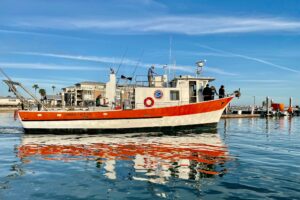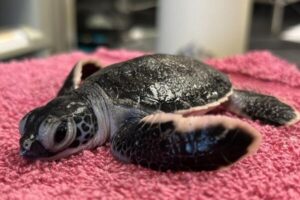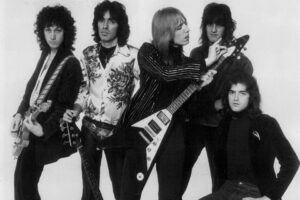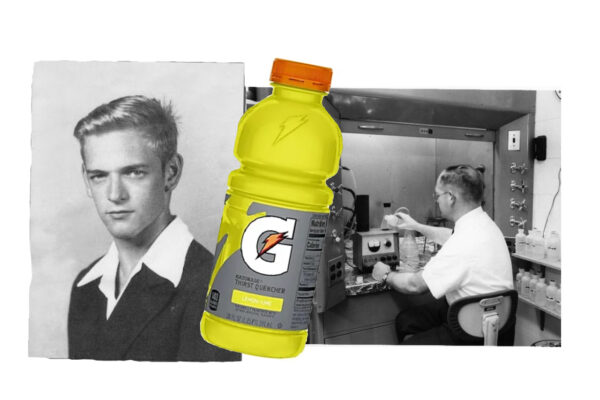In our series SEC Connections, we take a quick look at coincidences, partnerships and parallels between The University of Texas at Austin and our sister schools in the Southeastern Conference. This week, The University of Florida.
* * *
Robert Cade grew up in San Antonio and graduated from UT in 1948 with a Bachelor of Arts degree. In 1961, this Life Member of the Texas Exes went to work as a nephrologist (kidney specialist) at the University of Florida College of Medicine and in 1965 led a team of researchers in trying to figure out why football players didn’t urinate after a game. They soon learned that players lost so much fluid that they had none left to form urine. Cade developed a drink that contained salts and sugars that could be absorbed more quickly, and the basis for Gatorade was formed, so named for the team that would first drink it, thanks to a Longhorn.


Texas and especially Austin is home to millions of Mexican free-tailed bats. Any major campus structure, including the Tower, the stadium, or academic buildings (and not only Batts Hall!), can house the flying mammals in its exterior joints, and administrators send out regular warnings against handling bats, which can carry rabies, found on the ground. Meanwhile, the University of Florida Bat Houses are home to 750,000 Mexican free-tailed bats (also known as Brazilian free-tailed bats), Southeastern bats and evening bats. It has even built bat houses and a bat barn (see video below) to shelter the insectivores.
Within the last five years, Texas and Florida faculty have conducted joint research in molecular biosciences, integrative biology, earth and planetary science, construction industry standards, nuclear engineering, psychology, geophysics, marine science, kinesiology, electrical and computer engineering and architecture.


If there’s one thing Texas and Florida have in common, it’s coastline. While Texas has 3,359 shoreline miles of coast, Florida has a whopping 8,436 shoreline miles. UT’s Marine Science Institute was founded in 1941 at Port Aransas to research and to educate students and the public about Texas’s marine ecology. It now has 125 faculty and staff supporting 600 students. Meanwhile, the University of Florida’s Whitney Laboratory for Marine Bioscience is located in St. Augustine on Florida’s Atlantic coast. The Whitney Lab was founded in 1974 to use marine model animals for studying fundamental problems in biology and applying that knowledge to issues of human health, natural resources, and the environment. It’s composed of 11 faculty-led research labs with more than 70 researchers and staff.
Gainesville and Austin are both known for rock and roll. Gators were key to the early success of Tom Petty and the Heartbreakers, Stephen Stills, and Eagles members Don Felder and Bernie Leadon, while Longhorns spurred the careers of guitar hero Eric Johnson, blues rocker Gary Clark Jr. and alumnus Darden Smith, UT’s inaugural songwriter in residence.






